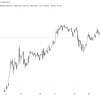On October 10, Christie’s London will auction “Ascend,” a unique piece of dynamic digital art recorded in the Bitcoin Ordinals protocol, during its Post-War and Contemporary Art Day sale. This will be the only digital artwork offered for sale.
This event will be the first ever Bitcoin Ordinal to appear at a Christie’s live auction, bridging the gap between the traditional and digital art worlds.
“Rising” is part of “Wild inside» project created by artists Ryan Koopmans And Alice Wexell. The series brings architectural ruins to life digitally, combining photography with cutting-edge 3D techniques to breathe new life into abandoned spaces.
The piece captures the crumbling beauty of the Iveria sanatorium in Tskaltubo, Georgia, which was once a famous health center during Soviet times. The building, constructed between 1952 and 1962, has since fallen into disrepair, providing a poignant backdrop for Koopmans and Wexell’s artistic explorations.
I am very pleased to announce that “Ascend”, our dynamic lettering 1 of 1, is offered in the Post-War and Contemporary Art Day sale at Christie’s London.
When: Open for bidding now, live sale will take place on October 10, 2024 at 10:00 am EST / 3:00 pm BST.
Where: Christie’s London, 8 King Street… https://t.co/R8FLvDEl3M pic.twitter.com/bL0Dsf3XO7
— Ryan Koopmans (@ryankoopmans) September 26, 2024
The sanatorium’s lobby, now destroyed and overrun by nature, serves as the center of the artwork. With their artistic vision, Koopmans and Wexell create a surreal mixture of past and future, nature and architecture.
What sets next”Climbing” It is worth noting its dynamic nature. Built on the Bitcoin blockchain using the NFT-like Ordinals protocol, the piece switches between day and night modes, reflecting actual time on a real architectural site in Georgia through a 30-minute transition process.
This was made possible thanks to innovative technologies r.excursion coding developed by the team Writing Atlantisallowing the digital artifact to change in real time. The encoding references Bitcoin’s clock, allowing the artwork to reflect the passage of time in its original physical location.
Koopmans, who until 2024 minted only on Ethereum, said Decipher that Bitcoin has changed the game for digital artists.

“This allows you to create larger works of art with a lot of lettering,” he said. “Serial numbers functioning as digital artifacts on the Bitcoin blockchain echo our goal of preserving the subject (a crumbling architectural ruin) and the art itself in a permanent, unchanging form.”
This element represents a significant innovation in the world of digital art, demonstrating the potential of Bitcoin as a means of creating complex, evolving works of art.
Ordinal recursion is a technique that allows artists to overcome the file size limitations inherent in writing data to the Bitcoin blockchain. Because each lettering has a maximum size, creating larger, more complex works of art requires a method of combining several smaller letterings to work together.
“Recursion allows us to do just that, allowing one label to reference and include others,” Koopmans explained. “This means that we can create a complex work of art by connecting together several individual parts in a chain.”

“Dynamic encoding enhances this process by introducing interactive or evolving elements into the artwork,” he continued. “By embedding code into these labels, we can create snippets that respond to user interaction or change over time based on certain conditions.”
He adds that “Climbing” was recorded on a Satoshi mined on March 24, 2021—the same day he minted the first part of “The Wild Within” on Ethereum, which he said created “a meaningful connection between these two blockchains.”
“Collaborating with the talented developers at Inscribing Atlantis allowed us to create a piece of art that is both personal, true to our artistic vision, and the first of its kind in many ways,” said Koopmans.
“Bitcoin writing is a fantastic tool for recording the provenance and preserving the longevity of works of art on the network,” he continued. “However, the visual and conceptual creation of the artwork itself is still of great importance and should not be overshadowed by technical aspects.”
Bye “Climbing” lives on the Bitcoin blockchain, a physical print of the artwork will also be available to the winning collector in one of three size options.
This Christie’s auction is a significant milestone not only for Koopmans and Wexell, but also for the broader adoption of Ordinals as a new medium for digital art, particularly in the fine arts.
Traditionally, Bitcoin has been known for its financial uses, but the advent of serial numbers has opened up new possibilities for preserving digital art in an immutable, decentralized form. And the recursion technique has broken down some of the original barriers to writing in Bitcoin, allowing more complex work like this to be done.
“Bitcoin itself is exceptional,” Koopmans said. “Reaching new audiences is important for any artist, and the Bitcoin art community has been incredibly welcoming, supportive and enthusiastic.”
Edited by Andrew Hayward























